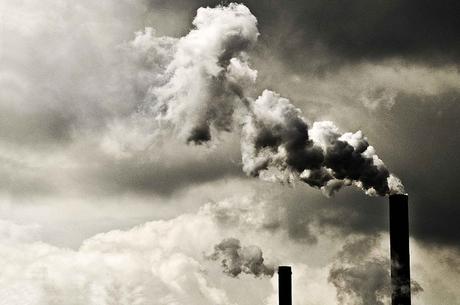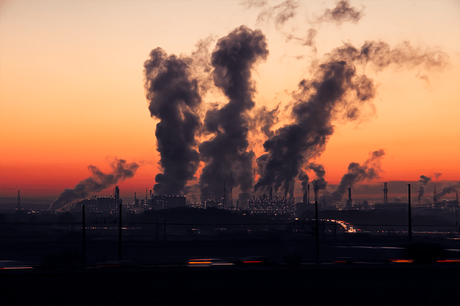11 Top Most Polluting Countries in the World as of 2017
Reporters have again and again given account of the level of pollution in various countries and cities across the globe. According to the World Health Organization (WHO), for instance, there are countries whose pollution levels can cause a sore throat by mere half an hour of sightseeing. This shows just how devastating the pollution problem is and to make matters even worse, such high polluting countries are usually regarded as unattractive and never in demand.
In other words, pollution may be part and parcel of life because it cannot be completely avoided as long as there is fossil fuel combustion, industrial processes, the running of power plants, and forest fires just to mention a few. But as much as populations prefer cleanliness and neatness in a lot of their activities, there are certain countries that rank and perform poorly because of their high pollution levels and some have the worst pollution records. Accordingly, this paper will show 11 of the most polluted countries in the world as of 2017.

1. Pakistan
Pakistan has an average concentration of PM 2.5 of 101ug/m3. This is the highest rate of pollution in the world. The country, with a population of 196.17 million, is among the most populated countries in the world. The outdoor air in Pakistan is of the worst quality. Also, the country leads in air pollution.
The country’s life expectancy is quite low with an average of 64 for males and 66 for females. There are various cities that make the top ten lists of the dirtiest cities. Three of them are from Pakistan, making the country the most polluted. Consequently, there has been an increase in the respiratory diseases caused by the polluted air.
2. Qatar
Qatar has an average concentration of PM 2.5 of 92ug/mg3. There are various reasons why Qatar is a surprise entrant in this list. What is surprising is that it is one of the smallest countries in the world. Moreover, at $96,903, it has one of the biggest GDP (PPP) per capita making it a country for the luxury.
It is because of the GDP (PPP) per capita and the good life that most of the residents are able to afford health care thus boasting of a good life expectancy of 78 for female and 79 for male. Like Pakistan, the country has a few cities in the top polluted cities with its own capital city, Doha, at 12th. The air pollution in Qatar is caused by carbon emissions from private cars as well as air traffic.
3. Afghanistan
It has an average concentration of PM 2.5 of 84 ug/mg3, making it the third most polluted country in the world. In comparison with Qatar, it has a very low GDP (PPP) per capita but a high population. The life expectancy is quite low at 60 years for both genders. The low expectancy is owed to the fact that there is a lot of pollution in the atmosphere. This is caused by the burning of rubber and plastics. Also, the constant driving to work increases carbon emissions to the air.
4. Bangladesh
It has an average concentration of PM 2.5 of 79ug/m3. The country is home to over 150 million people. This population is a strain to the available resources such as air. For this reason, there is a lot of pollution from industries and human activities. Also, there are three cities from Bangladesh that appear among the top most polluted cities. The life expectancy is at 70 for both genders.
5. Iran
This Middle East country has average concentration of PM 2.5 of 76ug/m3. The country is quite populous with a population of 77 million. It has a good GDP (PPP) per capita which is close to that of Qatar but still lower at $12,478. This means that the average Iranian can seek medical attention to cater for their respiratory issues. It is for this reason that the life expectancy is 74 years.
The country is home to a lot of minerals including oil. These materials have sulfur, carbon and asbestos, which are poisonous when inhaled. This makes the air in Iran toxic. Khoramabad is the most polluted city in Iran and is among the most polluted cities in the world.
6. Egypt
This is the most polluted African country with an average concentration of PM 2.5 of 74ug/m3. Moreover, it is one of the most populated countries both in Africa and fairly in the world with a population of around 87 million. The Egyptian population growth is great around the Delta region which is to the North of the country. It is here that towns and cities have emerged as a result of the growth of industries.
Cities such as Cairo and Alexandria have grown to become great industrial cities that are most both most populated and polluted. On this account, the air pollution in this country is caused by the toxic air releases by the factories in the delta region to the atmosphere. The life expectancy in Egypt is not badly off with an average of 75 years for females and 71 for males.

7. Mongolia
This is a small country, just as Qatar but with a very low GDP (PPP) per capita. Whereas their populations are almost similar, the GDP (PPP) per capita of Mongolia is at $5,371 while that of Qatar is at $96,903. With an average concentration of PM 2.5 of 64ug/m3, it is the 7th most polluted country in the world. This is attributed to the burning of coal that is done regularly in order to overcome the cold weather. These carbon emissions go a long way to polluting the air. The practice has since lowered life expectancy, which is at 68 years for both males.
8. United Arab Emirates (U.A.E)
This is one of the richest countries in the world. With a small population of about 9 million people, this Middle East country has a GDP (PPP) per capita of $30,984. With an average concentration of PM 2.5 of 61ug/m3, it is the 8th most polluted country. The heightened level of air pollution in UAE is due to the excavation of oil, which leads to subsequent release of harmful gases such as nitrogen oxide. Also, the country is home to many automobiles thus more carbon emissions. The country has made strides in order to reduce pollution, for instance, the annual car free days. The country boasts of a life expectancy of 77 years.
9. India
The average concentration of PM 2.5 in India is 59ug/m3. This is the second biggest country in terms of population with a population of over one billion, just behind China. The GDP (PPP) per capita of the country is a bit low ($5,777) owing to the large population. The large population is the source of the problem because it puts a strain in the use of resources. The pressure on industries, water sources, and food companies warrants for more industrial activities, which leads to more releases of waste products into the environment as well as rivers such Ganges.
Moreover, the large population translates to more automobiles which mean more carbon emissions into the atmosphere. It is for this reason that the life expectancy is quite low at 69 for women and 67 for men. Worth noting is that Indian cities occupy six slots in the top ten most polluted cities in the world with its capital city, New Delhi, taking first position.
10. Bahrain
This is a small country with a meager population of 1.3 million, the lowest in this group. It is the 10th most polluted country with an average concentration of PM 2.5 of 57ug/m3. It may be a small country but it has a powerful GDP (PPP) per capita of $28,559. The country is highly oriented towards massive industrialization. Consequently, there is very high carbon emissions and energy loss to the atmosphere, which causes air pollution. Owing to the powerful GDP (PPP) per capita and a manageable population, the country has great health facilities, which have boosted the life expectancy to 76 for females and 73 for males.
11. Nepal
With an average concentration of PM 2.5 of 51ug/m3, Nepal makes it to number 11 on this list. With an approximate population of 29 million, it is fairly a small country. The country, which is closest to the Himalaya, is feared to negate the glaciers or the beauty of the Himalayas due to increased levels of air pollution. The pollution has led to respiratory diseases. Car emissions have also intensified with the increased use of outdated vehicles.

